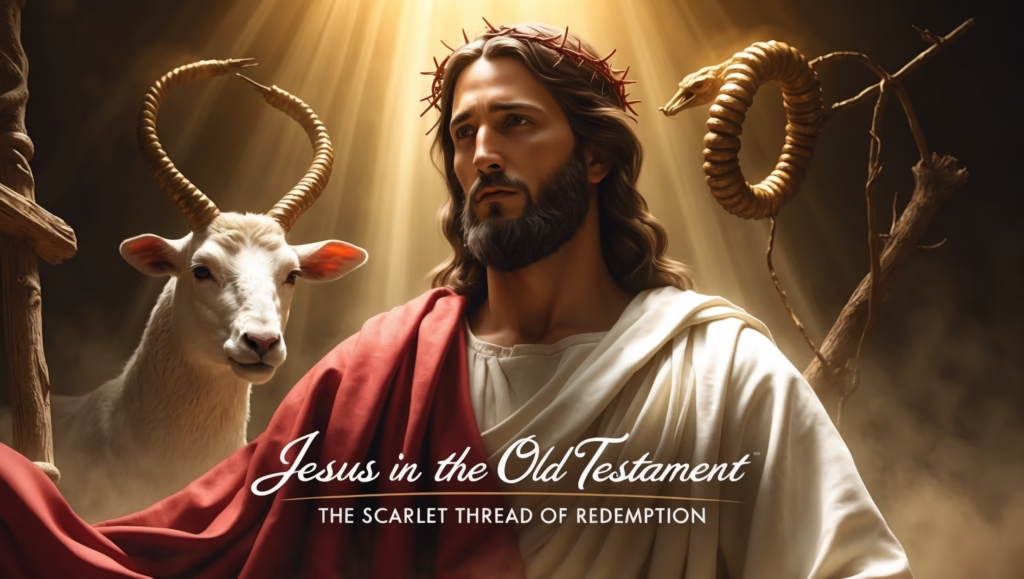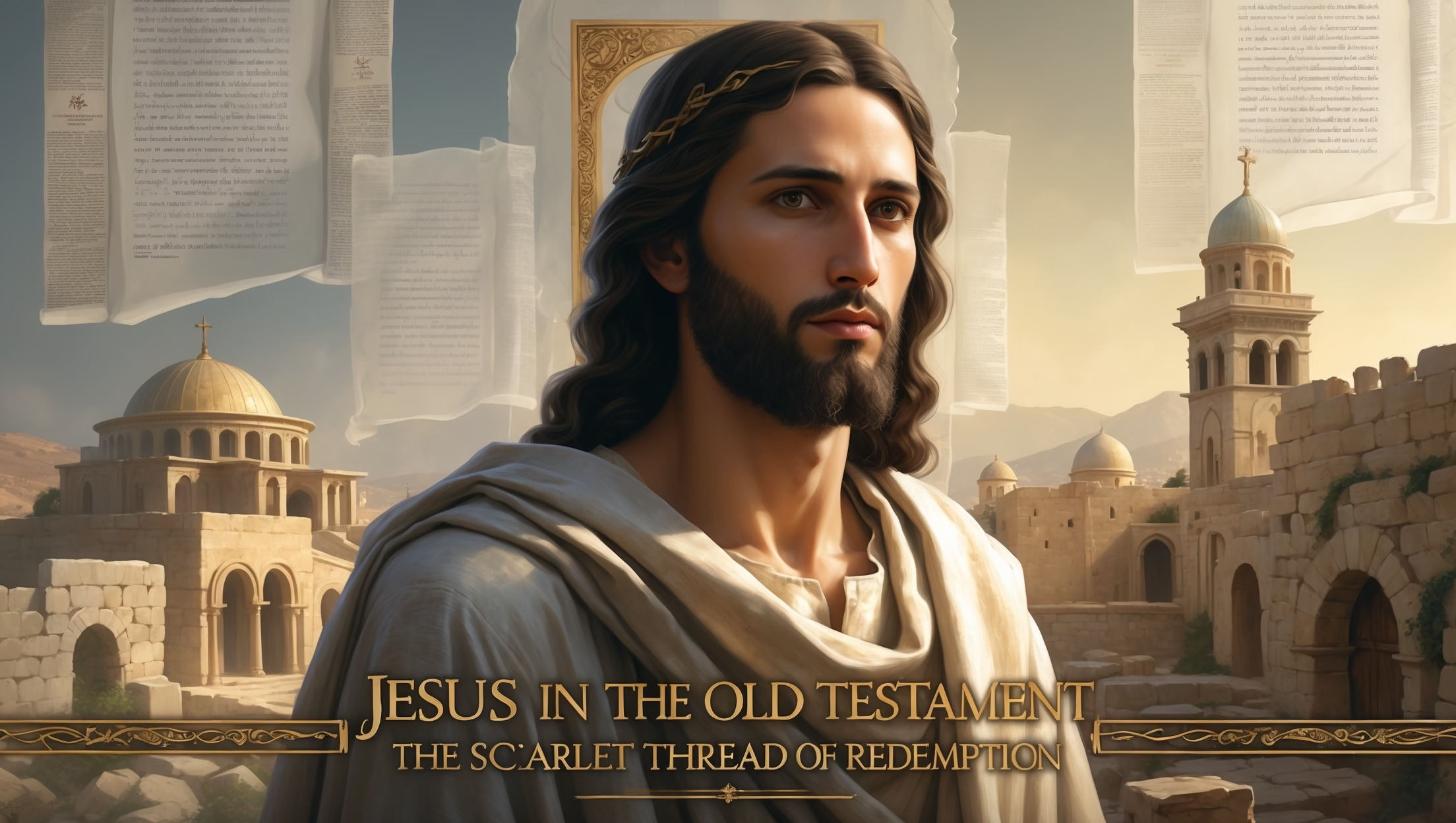How the Hebrew Scriptures Point to Messiah
From Genesis to Malachi, the Hebrew Scriptures whisper, shout, and sing of Jesus. The Old Testament is not merely a backdrop to the New—it is the very soil from which the gospel springs. Across centuries, through law, poetry, prophecy, and narrative, the Spirit wove a single, unbroken theme: redemption through the Messiah.
Scholars have identified more than 300 messianic prophecies fulfilled in Jesus Christ—far too many for coincidence. These range from specific predictions about His birth and death to rich patterns and symbols (types) that find their meaning in Him.

Direct Prophecies Fulfilled in Jesus
The Old Testament contains direct, predictive prophecies—spoken centuries before Christ—that were historically and verifiably fulfilled in His life.
| Prophecy | OT Reference | NT Fulfillment |
| Virgin Birth | Isaiah 7:14 | Matthew 1:22–23 |
| Bethlehem Birth | Micah 5:2 | Matthew 2:1–6 |
| Pierced Hands/Feet | Psalm 22:16 | John 20:25–27 |
| Buried with the Rich | Isaiah 53:9 | Matthew 27:57–60 |
These are not vague predictions that could fit anyone—they are specific, measurable, and historically grounded.
- Virgin Birth — Isaiah’s prophecy to King Ahaz was a sign of divine intervention. Matthew records its fulfillment in Mary, whose conception was by the Holy Spirit.
- Bethlehem Birth — Micah pinpointed a small, obscure village as Messiah’s birthplace. The Gospel writers note that Jesus’ parents, living in Nazareth, traveled there for the census at the exact time of His birth.
- Pierced Hands/Feet — Psalm 22, written centuries before Roman crucifixion existed, describes the piercing of hands and feet.
- Buried with the Rich — Isaiah foresaw that though the Servant would die among the wicked, His burial would be with the rich. Joseph of Arimathea, a wealthy man, laid Jesus in his own tomb.
Typological Foreshadowing: Patterns that Point to Christ
Beyond explicit predictions, the Old Testament contains types—historical events, rituals, and figures that serve as prophetic symbols of the Messiah.
The Passover Lamb — Exodus 12
When God delivered Israel from Egypt, the blood of an unblemished lamb protected each household from judgment. In John 1:29, John the Baptist points to Jesus and declares, “Behold, the Lamb of God, who takes away the sin of the world!” Paul calls Christ “our Passover lamb” (1 Corinthians 5:7).
The Bronze Serpent — Numbers 21:4–9
When Israel rebelled, venomous snakes struck the people. God commanded Moses to lift up a bronze serpent; those who looked upon it in faith lived. Jesus directly referenced this in John 3:14–15: “Just as Moses lifted up the serpent in the wilderness, so must the Son of Man be lifted up, that whoever believes in Him may have eternal life.”
Jonah’s Three Days — Jonah 1:17
Jonah’s entombment in the fish for three days foreshadowed Christ’s death and resurrection. Jesus Himself draws the parallel in Matthew 12:40, calling it “the sign of Jonah.”
Key Insight: Jesus did not merely stumble into fulfilling these prophecies. Luke 24:25–27 records that after His resurrection, He explained to the disciples “beginning with Moses and all the Prophets” how the Scriptures pointed to Him. His life and death were the intentional completion of God’s redemptive plan.
The Seven “I AM” Statements: Christ’s Divine Self-Disclosure
John’s Gospel records seven declarations where Jesus uses the divine name revealed in Exodus 3:14 (“I AM WHO I AM”) to describe Himself. In each, He not only claims deity but reveals an aspect of His saving work.
1. “I am the bread of life” (John 6:35, 48)
Context: Spoken after feeding 5,000.
Meaning: Just as manna sustained Israel in the wilderness, only Christ satisfies the deepest spiritual hunger.
2. “I am the light of the world” (John 8:12; 9:5)
Context: Spoken during the lamp-lighting ceremony at the Feast of Tabernacles.
Meaning: He reveals truth, dispels spiritual darkness, and guides His people.
3. “I am the door” (John 10:7, 9)
Context: The imagery of a sheepfold where the shepherd himself serves as the gate.
Meaning: Christ is the exclusive entry into God’s salvation and protection.
4. “I am the good shepherd” (John 10:11, 14)
Contrast: Unlike hired hands who abandon the sheep, the Good Shepherd lays down His life for them.
Meaning: His care is sacrificial and personal.
5. “I am the resurrection and the life” (John 11:25)
Context: Spoken at Lazarus’ tomb.
Meaning: He has authority over life and death; belief in Him brings eternal life.
6. “I am the way, the truth, and the life” (John 14:6)
Context: The Upper Room discourse before His arrest.
Meaning: He is the sole path to the Father, the embodiment of truth, and the source of life.
7. “I am the true vine” (John 15:1, 5)
Context: Final teaching before His arrest, using vineyard imagery.
Meaning: Spiritual fruitfulness and vitality come only through abiding in Him.
Theological Significance
The Old Testament does not merely hint at Christ—it prepares the world for Him. The prophecies declare His credentials. The types and shadows shape our expectations. The “I AM” statements reveal His divine identity in unmistakable terms.
In all of this, we see the scarlet thread—a continuous line of redemptive promise weaving through the centuries. Genesis 3:15 promised that the seed of the woman would crush the serpent’s head. The covenants with Abraham, Moses, and David each build on that promise. The prophets foretold a suffering servant, a righteous king, and a new covenant written on the heart. Jesus fulfills them all.
Why This Matters for Us Today
- Confidence in Scripture — The accuracy of prophecy fulfilled in Christ strengthens our trust in God’s Word.
- Clarity about Jesus — He is not one religious option among many; He is the center of God’s plan from the beginning.
- Call to Worship — The more we see Him in the pages of the Old Testament, the more we are moved to worship the God who writes history with such precision.
Conclusion: The Story Was Always About Him
The Old Testament is not a disconnected prelude to the “real” story in the New Testament—it is the story. Every covenant, law, prophecy, and psalm was ultimately leading to the day when the Word would become flesh and dwell among us.
From the garden to the manger, from the Passover to the cross, from Jonah’s descent to the empty tomb, Jesus is the center. The scarlet thread of redemption runs unbroken from Genesis to Revelation—woven by the hands of a God who always keeps His promises.








